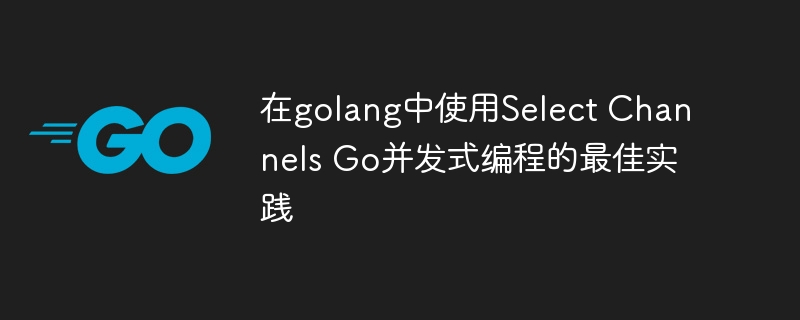

Using Select Channels in golang Best practices for concurrent programming in Go
Introduction:
The concurrency model of the Go language and the built-in Channel type make concurrent programming possible Becomes very convenient and efficient. Using Channel for concurrent programming can realize the parallel execution of a variety of tasks without the need for explicit threads and locks. This article will introduce the best practices of using Select and Channels for concurrent programming in Go language, and provide specific code examples.
1. Understand the concept of Channel and Select
The following is a sample code for concurrent programming using Select and Channel:
package main
import (
"fmt"
"time"
)
func main() {
done := make(chan bool)
message := make(chan string)
go func() {
time.Sleep(time.Second)
message <- "Hello World!"
}()
go func() {
time.Sleep(2 * time.Second)
done <- true
}()
select {
case <-done:
fmt.Println("Done signal received!")
case msg := <-message:
fmt.Println("Message received:", msg)
case <-time.After(3 * time.Second):
fmt.Println("Timeout!")
}
}By using Select and Channel properly, we can achieve efficient concurrent programming. In actual projects, we can flexibly use the various features of Select and Channel according to specific needs and scenarios. By rationally designing the type of Channel, using Buffer Channels and Channels with timeout mechanisms, and combining multiple Channel operations, we can achieve clearer and more efficient concurrent programs.
The above is the detailed content of Best practices for using Select Channels in golang Go concurrent programming. For more information, please follow other related articles on the PHP Chinese website!
 How to define variables in golang
How to define variables in golang
 What are the data conversion methods in golang?
What are the data conversion methods in golang?
 What are the commonly used libraries in golang?
What are the commonly used libraries in golang?
 What is the difference between golang and python
What is the difference between golang and python
 Detailed explanation of oracle substr function usage
Detailed explanation of oracle substr function usage
 What should I do if my windows license is about to expire?
What should I do if my windows license is about to expire?
 Introduction to software development tools
Introduction to software development tools
 The role of padding attribute in css
The role of padding attribute in css




